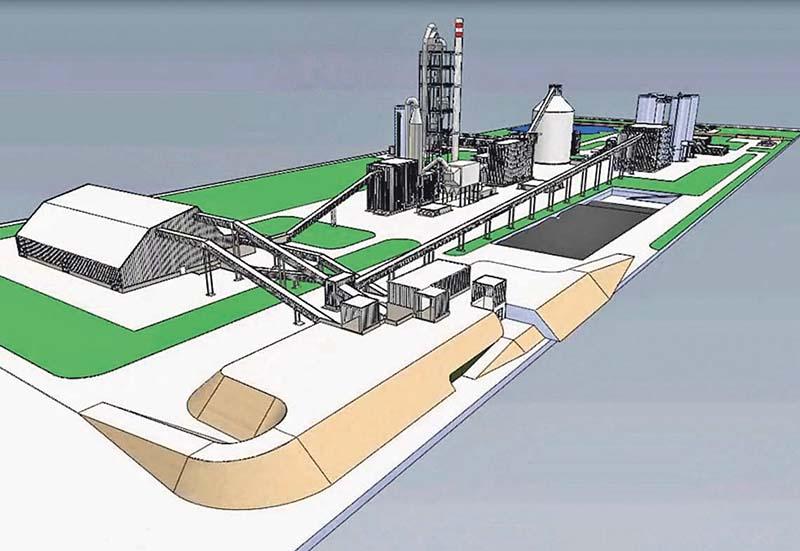The Ontario Local Planning Appeal Tribunal (LPAT) has issued a decision in favour of a company planning to build a controversial cement plant near L’Orignal on County Road 17.
A lengthy hearing took place in November and December of 2020, which resulted from two appeals made by opposing parties in response to planning decisions made involving the proposed cement plant in 2017. Action Champlain, an organization of citizens and environmental groups opposed to the cement plant, launched an appeal of the Official Plan Amendment (OPA) approved by the United Counties of Prescott and Russell (UCPR) council that was required for the cement plant to be built. Colacem launched its appeal of the Zoning By-law Amendment (ZBA) that was required for the cement plant to be built but was rejected by Champlain Township council.
On April 12, LPAT Member Nicholas Robinson, who had presided over the hearings, issued two orders. One dismissed Action Champlain’s appeal of the OPA and upheld its approval by the UCPR council. The second order upheld Colacem’s appeal of the ZBA approved by Champlain council and amends it to permit cement plant use on the property.
The site of the plant is to be adjacent to the existing Colacem limestone quarry. Stone from that quarry is to be used to supply the cement plant.
During the hearing, experts on noise, air quality, traffic, groundwater protection, land use planners, and 15 participants, including citizens and activists, presented studies and other information both for and against the cement plant. Representatives of Colacem and the UCPR also appeared at the hearing. Everyone who appeared at the hearing was questioned by the legal counsels representing Action Champlain, Colacem, and the UCPR.
The tribunal found Colacem presented “extremely persuasive” evidence relating to the employment benefits the cement plant will have, and that the planning applications meet the requirement to promote economic development and competitiveness.
Regarding concerns over adverse effects such as noise and air pollution, the decision report highlights that expert studies demonstrated adverse effects can be mitigated or minimized so the plant can operate in compliance with provincial requirements using design measures, separation distances, and buffering.
Colacem had also proposed adjusting the location of the cement plant by 50 metres and to change the location of an electrical substation, which increased the setback distances.
“The evidence before the tribunal supports the conclusion that adverse effects have been avoided insofar as water, noise, and traffic are concerned,” states the LPAT report.
With respect to air quality concerns, the tribunal found expert findings demonstrated that even when the operations of the cement plant and the quarry are combined, the concentration of contaminants at designated receptor points is unlikely to increase.
The LPAT decision report states it has no doubt the cement plant and use of the adjacent quarry would not fulfill the provincial policy of encouraging aggregate resource extraction for processing close to major markets. The tribunal found that constructing the plant next to the quarry would be an efficient and appropriate use of resources.
The tribunal agreed with studies and answers given by experts representing Colacem that the proposed use would conform with the existing UCPR Official Plan (OP), which outlines land uses that conform with natural and cultural heritage, transportation, and health and safety policies.
Based on the expert evidence presented at the hearing, the tribunal found that the cement plant is also an appropriate land use for the proposed location on County Road 17. The tribunal also agreed with Colacem’s studies contending that the design of the plant would protect groundwater in the surrounding area, which includes several residential properties and small businesses.
The Provincial Policy Statement (PPS) guides land use planning for municipalities across Ontario. After examining the evidence and testimony presented during the hearing, it found the proposed cement plant complies with the PPS.
LPAT decisions may be appealed in the Divisional Court. A motion must be filed in court within 15 days of the LPAT decision being issued.


